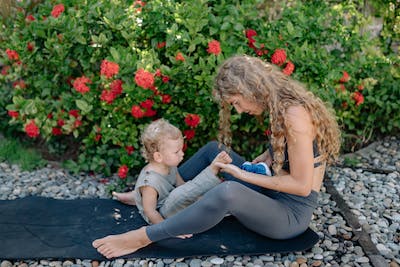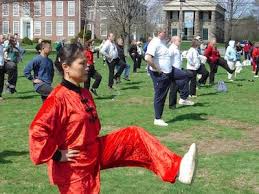Embracing the Beauty of the Present Moment in 2025 to Make Life Beautiful!
Embracing the beauty of the present moment, also known as the “here and now,” refers to the current moment in time, free from distractions of the past or worries about the future. It’s the moment when we are fully engaged, aware, and attentive to our thoughts, emotions, and surroundings.
Significance of the Present Moment in Human Life
- Reduces stress and anxiety: Focusing on the present moment can help alleviate worries about the past or future.
Increases mindfulness: Being present encourages us to be more aware of our thoughts, emotions, and actions.
Improves relationships: Engaging with others in the present moment fosters deeper connections and understanding.
Enhances productivity: Focusing on the present task can improve concentration and efficiency.
Increases gratitude: Appreciating the present moment can cultivate gratitude for life’s simple joys.

Incorporating the Present Moment into Daily Life
- Mindfulness meditation: Regular mindfulness practice helps develop the skill of being present.

Mindfulness Exercise 5-5-5 breathing Deep breathing exercises: Focusing on breath can bring us back to the present moment.
Engage in activities fully: When doing something, focus on the task at hand, without multitasking or distractions.
Practice gratitude: Reflect on the things you’re thankful for each day.
Take breaks from technology: Regularly disconnect from screens to reduce distractions and promote presence.
Savour experiences: Fully immerse yourself in enjoyable activities, like eating, walking, or spending time with loved ones.
Use reminders: Place sticky notes or reminders on your phone to encourage yourself to stay present throughout the day.
By incorporating these practices into daily life, you can cultivate a greater sense of presence, leading to a more meaningful, fulfilling, and joyful life.
Real-Life Examples of Not Living in the Present Moment
Some examples of how the concept of the present moment can be applied to real-life situations:
- Eating
– Past-focused: Eating while watching TV or scrolling through your phone, thinking about the events of the day.
– Present-focused: Savouring each bite, paying attention to the flavours, textures, and aromas, and enjoying the company of those you’re with. - Commuting
– Future-focused: Stressed about being late, worrying about the day’s tasks, or planning your weekend.
– Present-focused: Noticing the scenery, listening to music or podcasts, or simply enjoying the quiet time to yourself. - Conversations
– Distracted: Responding to messages or emails while talking to someone, or thinking about your response instead of listening.
– Present-focused: Maintaining eye contact, actively listening to the other person, and responding thoughtfully. - Work
– Multitasking: Constantly switching between tasks, checking email, or chatting with coworkers.
– Present-focused: Focusing on a single task, giving it your undivided attention, and taking regular breaks to recharge. - Spending time with loved ones
– Half-present: Playing with your phone while spending time with family or friends.
– Present-focused: Engaging fully with your loved ones, putting away distractions, and enjoying quality time together.
Common scenarios where people fail to live in the present moment, often due to distractions or mental habits:
-
Overthinking the Future
-
A CFO waiting for a flight becomes consumed by “what if” scenarios about an employee’s transfer request, unable to focus on the present moment. This mental spiral distracts him from his surroundings and tasks at hand.
-
-
Mindless Activities
-
Scrolling through social media while eating dinner, barely noticing the taste or texture of the food.
-
Commuting home and realising you don’t remember any details about the journey because your mind was elsewhere.
-
-
Reliving Past Mistakes
-
Dwelling on an embarrassing moment from years ago while trying to enjoy a current activity, like riding a bike or attending a social event.
-
-
Multitasking Conversations
-
Being half-present in a conversation while checking your phone or thinking about work emails, prevents meaningful engagement with others.
-
-
Avoiding Discomfort
-
Using distractions like binge-watching TV or drinking alcohol to avoid confronting uncomfortable emotions or situations in the present moment.
-
Learning the Lessons from Kids About Living in the Present Moment
Children are natural experts at living in the present moment. They immerse themselves fully in their activities, experiencing life with curiosity, joy, and simplicity. Here are some key lessons we can learn from their behaviour, along with real-life examples and inspiring quotes to reflect upon:
- Embracing Joy in Simple Things
Children find happiness in the smallest of things—a butterfly in the garden, splashing in puddles or playing with a cardboard box. Adults often overlook these simple joys due to stress or distractions.
Example: Instead of appreciating a beautiful sunset, an adult might be busy capturing it for social media, missing the moment entirely.
Quote: “We spend our whole childhood wanting to grow up faster. But we spend our whole adult life wanting to go back to the simplicity of being a kid again.” – Unknown
- Letting Go of Grudges
Kids fight one moment and play together the next. They don’t hold onto resentment or grudges like adults often do.
Example: A child might forgive their friend for taking their toy within minutes, while adults might hold onto workplace conflicts for months.
Quote: “Holding onto anger is like drinking poison and expecting the other person to die.” – Buddha
- Being Fully Present in Activities
Children are completely absorbed in whatever they do—whether it’s drawing, building blocks, or running around. Adults, on the other hand, often multitask or let their minds wander.
Example: While eating dinner, a child enjoys every bite, while an adult might scroll through emails or think about tomorrow’s tasks.
Quote: “Be where you are; otherwise you will miss your life.” – Buddha
- Staying Curious and Open-Minded
Children approach life with curiosity and wonder, asking endless questions and exploring new things without fear of judgment. Adults often lose this sense of curiosity due to societal pressures or fear of failure.
Example: A child might spend hours observing ants building a colony, while an adult might walk past without noticing it at all.
Quote: “The real voyage of discovery consists not in seeking new landscapes but in having new eyes.” – Marcel Proust
- Choosing Happiness Over Perfection
Kids don’t wait for perfect conditions to be happy—they simply enjoy what they have. Adults often tie their happiness to achievements or material possessions.
Example: A child can find immense joy in playing with a stick and some mud, while an adult might stress over not having the latest gadget.
Quote: “Happiness is not something ready-made. It comes from your actions.” – Dalai Lama
- Accepting Emotions Without Judgment
Children experience emotions fully but don’t dwell on them for long—they cry when they’re sad and laugh when they’re happy without overthinking it. Adults often suppress emotions or overanalyse them.
Example: A child might cry after falling but quickly get back up and resume playing, while an adult might dwell on the pain for hours or days.
Quote: “Feelings come and go like clouds in a windy sky. Conscious breathing is my anchor.” – Thich Nhat Hanh
- Living Without Fear of Judgment
Kids are unapologetically themselves—they dance, sing, or express themselves freely without worrying about what others think. Adults often let societal expectations dictate their behaviour.
Example: A child might wear mismatched clothes proudly because they like them, while an adult might avoid bold fashion choices out of fear of judgment.
Quote: “Why fit in when you were born to stand out?” – Dr. Seuss
- Practising Forgiveness Easily
Children forgive quickly because they prioritise relationships over ego or pride—something adults struggle with as they grow older and become more guarded.
Applying These Lessons as Adults
To live more like children:
-
Take mindful walks and observe your surroundings with curiosity.
-
Practice gratitude for small joys.
-
Let go of grudges by forgiving others quickly.
-
Engage fully in activities without distractions.
By adopting these childlike qualities, we can reconnect with the present moment and experience life more fully.
Reflection Question: What’s one way you can embrace the present moment today? Share your thoughts!
These examples illustrate how being present at the moment can enhance our daily experiences, relationships, and overall well-being. We can learn lessons from kids, they fully immerse every single action in the present moment, so they enjoy a lot more
Children are indeed masters of living in the present moment. They have a unique ability to fully immerse themselves in whatever they’re doing, whether it’s playing, learning, or simply exploring their surroundings.
Embracing the Present Moment: A Path to Mindfulness and Fulfilment
Discover the transformative power of the present moment. Learn practical mindfulness techniques to reduce stress, improve focus, and live a more meaningful life.
In today’s fast-paced world, where distractions are endless and stress levels are high, the concept of living in the present moment has become more relevant than ever. But what does it truly mean to embrace the present, and how can it enrich our lives? This write-up keeps exploring the art of present-moment awareness, its benefits, and actionable steps to integrate mindfulness into your daily routine.
Why Living in the Present Moment Matters
Living in the present moment offers profound mental, emotional, and physical benefits:
-
Reduces Stress and Anxiety: By focusing on the now, you can break free from overthinking about past regrets or future uncertainties.
-
Improves Mental Clarity: Mindfulness enhances focus and productivity by reducing mental clutter.
-
Strengthens Relationships: Being fully present during conversations fosters deeper connections with others.
-
Boosts Happiness: Studies show that people who practice mindfulness report higher levels of contentment and joy.
How to Cultivate Present Moment Awareness
Here are practical steps to help you stay grounded in the now:

- Practice Mindful Breathing
Breathing is a powerful anchor for mindfulness. Try the “4×4 breath” technique: inhale for four counts, hold for four counts, exhale for four counts, and repeat. This simple exercise can instantly bring your attention back to the present.
- Engage Your Senses
Whenever your mind starts to wander, pause and focus on your senses. What can you see, hear, smell, taste, or touch? For example:
-
While walking outdoors, notice the rustling leaves or the warmth of sunlight on your skin.
-
During meals, savour each bite by paying attention to flavours and textures.
Limit Multitasking
Multitasking scatters your attention across multiple tasks. Instead, focus on one activity at a time. Whether it’s cooking dinner or writing an email, give it your undivided attention.
- Set Daily Mindfulness Reminders
Use visual cues like sticky notes or phone alarms with phrases like “Be Present.” These gentle reminders can help you refocus throughout the day.
- Meditate Regularly
Meditation is a cornerstone of mindfulness practice. Even five minutes a day can train your brain to stay in the moment longer. Apps like Calm or Headspace offer guided meditations tailored for beginners.
Overcoming Challenges in Staying Present
It’s natural for your mind to drift—this is part of being human! Instead of judging yourself when this happens:
-
Gently redirect your focus back to your breath or current activity.
-
Remember that mindfulness is a practice; perfection isn’t required.
Incorporating Mindfulness Into Daily Life
Mindfulness doesn’t have to be confined to meditation sessions. You can integrate it seamlessly into everyday activities:
-
While driving, Focus on the road ahead instead of thinking about your destination.
-
During Chores: Pay attention to each movement while washing dishes or folding laundry.
-
At Work: Take short breaks to stretch or breathe deeply between tasks.
Start Your Journey Today
The journey toward living in the present moment begins with small but intentional steps. By practising mindfulness daily, you can transform ordinary moments into extraordinary experiences filled with peace and clarity.
So why wait? Pause right now—take a deep breath—and embrace this very moment for all it has to offer.
What’s one way you’ll practice being present today? Share your thoughts in the comments below!
The concept of the present moment can be applied to real-life situations in numerous practical and impactful ways. Below are some examples and strategies, grounded in mindfulness practices, that demonstrate how present-moment awareness can enrich daily life:
- Managing Stress and Anxiety
Focusing on the present helps reduce stress by shifting attention away from worries about the future or regrets about the past. For instance:
-
During a stressful workday, taking a few deep breaths and focusing on your inhalations and exhalations can calm your mind and bring clarity to decision-making.
-
In moments of anxiety, grounding techniques like observing your surroundings or engaging your senses (e.g., noticing five things you can see) can help anchor you in the now.
Enhancing Relationships
Being present during interactions fosters deeper connections and empathy. For example:
-
While having a conversation with a loved one, actively listen without distractions like checking your phone. This strengthens mutual understanding and trust.
-
Practising mindfulness in parenting—such as fully engaging while playing with your child—can create meaningful memories and improve emotional bonds.
Boosting Productivity and Focus
Present-moment awareness enhances concentration by filtering out distractions. Here’s how:
-
At work, focus on one task at a time instead of multitasking. For example, while writing an email, give it your full attention rather than switching between tabs.
-
Use mindfulness techniques like the “4×4 breath” to reset focus during moments of mental fatigue.
Finding Joy in Everyday Activities

Practising mindfulness transforms mundane tasks into opportunities for presence and peace:
-
While eating, savour each bite by paying attention to the taste, texture, and aroma of your food instead of rushing through meals distractedly.
-
During chores like washing dishes or folding laundry, focus on the sensations of water or fabric to stay connected to the moment.
Coping with Life’s Challenges
Mindfulness equips individuals with tools to handle difficulties more effectively:
-
In moments of conflict or frustration, pausing to take a mindful breath before responding can prevent reactive behaviour and promote thoughtful communication.
-
During challenging times, mindfulness meditation can provide emotional resilience by helping you observe thoughts without judgment and focus on what’s within your control.
Improving Physical Health

Mindful awareness can also benefit physical well-being:
-
Engaging in mindful movement practices like yoga or tai chi helps connect the body and mind while reducing tension.
-
Mindfulness exercises during workouts—such as focusing on your breathing or muscle movements—can enhance performance and enjoyment.
Cultivating Gratitude

Living in the present moment fosters appreciation for life’s simple pleasures:
-
Pause periodically throughout the day to reflect on what you’re grateful for, such as a sunny day or a kind gesture from a colleague.
By integrating present-moment awareness into daily routines, individuals can experience reduced stress, improved relationships, enhanced focus, and greater overall well-being. The key is consistency—small but intentional practices repeated over time can lead to profound changes in how we experience life.
Citations:
- https://thehumancondition.com/present-moment-awareness/
- https://www.calm.com/blog/present-moment-awareness
- https://www.calm.com/blog/how-to-be-more-present
- https://www.mindful.org/how-present-moment-awareness-can-make-life-more-meaningful/
- https://psychcentral.com/blog/how-to-do-present-moment-awareness-meditation
- https://psychcentral.com/blog/what-it-really-means-to-be-in-the-present-moment
- https://positivepsychology.com/present-moment/
- https://www.mayoclinic.org/healthy-lifestyle/consumer-health/in-depth/mindfulness-exercises/art-20046356

